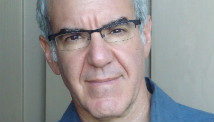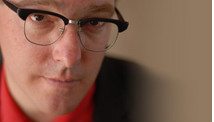PRETORIA, South Africa (AP) — Oscar Pistorius, the double-amputee sprinter dubbed the Blade Runner, was charged Thursday in the Valentine's Day slaying of his girlfriend at his upscale home in South Africa, a shocking twist to one of the feel-good stories of last summer's Olympics.
Pistorius buried his face in the hood of his workout jacket as officers escorted him from a police station after his arrest in the shooting death of Reeva Steenkamp, a 30-year-old model who had spoken out on Twitter against rape and abuse of women.
Police said she was shot four times in the pre-dawn hours at Pistorius' villa in a gated community in the capital, Pretoria. Officers found a 9 mm pistol inside the home and arrested Pistorius on a murder charge.
What sparked the shooting remained unclear, but police said they had received calls in the past about domestic altercations at the home of the 26-year-old athlete, who has spoken publicly about his love of firearms.
A police spokeswoman, Brigadier Denise Beukes, said the incidents included "allegations of a domestic nature."
"I'm not going to elaborate on it, but there have been incidents," Beukes said. She said Pistorius was home at the time of Steenkamp's death and "there is no other suspect involved."
Pistorius made history in the London Games when he became the first double-amputee track athlete to compete in the Olympics. He didn't win a medal but did make the semifinals of the 400 meters and became an international star.
Thursday, companies quickly removed billboards and advertising featuring Pistorius, a national hero in South Africa who also inspired fans worldwide with the image of his high-tech carbon-fiber blades whipping through the air.
Kenny Oldwage, Pistorius' lawyer, told reporters the athlete was "emotional" after his arrest, "but he is keeping up." He said he planned to seek bail for Pistorius at a preliminary hearing Friday.
Pistorius has had troubles in the past in his personal life, which often featured fast cars, cage fighters and women.
In February 2009, he crashed a speedboat on South Africa's Vaal River, breaking his nose, jaw and several ribs and damaging an eye socket. He required 180 stitches to his face. Witnesses said he had been drinking, and officers found alcoholic beverages in the wreckage, though they did not do blood tests.
In November, Pistorius was involved in an altercation over a woman with a local coal mining millionaire, South African media reported. The two men involved the South African Police Service's elite Hawks investigative unit before settling the matter.
Pistorius' father, Henke Pistorius, said Thursday: "We all pray for guidance and strength for Oscar and the lady's parents."
A spokeswoman for Pistorius at Fast Track, an international sports marketing agency in London, said the athlete was assisting with the investigation and there would be no further comment "until matters become clearer."
The sprinter's former coach, Andrea Giannini, said he hoped the shooting was "just a tragic accident."
"No matter how bad the situation was, Oscar always stayed calm and positive," Giannini told The Associated Press in Italy. "Whenever he was tired or nervous, he was still extremely nice to people. I never saw him violent."
Firearms captivated Pistorius, the subject of an online Nike advertisement that featured him with the caption: "I am a bullet in the chamber." In November 2011, he posted a photograph on Twitter of himself at a shooting range, bragging about his score. "Had a 96% headshot over 300m from 50shots! Bam!" he wrote.
Linked to a number of women by the South African media, Pistorius and Steenkamp were first seen together publicly in November. She was named one of the world's 100 Sexiest Women for two years running by the men's magazine FHM.
The leggy blonde with a law degree also appeared in international and South African ads and was a celebrity contestant on "Tropika Island of Treasure," a South African reality show filmed in Jamaica.
While known for her bikini-clad, vamping photo spreads, she tweeted messages urging women to stand up against rape. Her tweets also focused on Pistorius, with one of her last messages noting her excitement over Valentine's Day.
"What do you have up your sleeve for your love tomorrow?" she wrote. "It should be a day of love for everyone."
Police have not publicly named Steenkamp as the victim, saying only that a 30-year-old woman was killed. Steenkamp's publicist, however, confirmed in a statement that the model had died.
"Everyone is simply devastated," the publicist, Sarit Tomlinson, said. "She was the kindest, sweetest human being; an angel on earth and will be sorely missed."
Police arrived at Pistorius' home after 3 a.m., and paramedics tried unsuccessfully to revive Steenkamp, police spokeswoman Lt. Col. Katlego Mogale said.
Officers later took Pistorius to a hospital so doctors could collect samples for DNA testing and check his blood alcohol content.
Pistorius had both legs amputated below the knee before his first birthday because of a congenital condition, and campaigned for years to be allowed to compete against able-bodied athletes.
He was initially banned because of his carbon fiber blades — which critics said gave him an unfair advantage — before being cleared by sport's highest court in 2008.
He was a last-minute selection to South Africa's Olympic team, competing in the 400 meters and the 4x400 relay. He later retained his Paralympic title in the 400 meters.
South Africa's Sports Confederation, its Olympic committee and the International Paralympic Committee all had no comment on the shooting.
Shock rippled across South Africa, a nation of 50 million where nearly 50 people are killed each day, one of the world's highest murder rates. U.N. statistics say South Africa also has the second highest rate of shooting deaths in the world, behind only Colombia.
"The question is: Why does this story make the news? Yes, because they are both celebrities, but this is happening on every single day in South Africa," said Adele Kirsten, a member of Gun Free South Africa.
"We have thousands of people killed annually by gun violence in our country. So the anger is about that it is preventable."
___
Gerald Imray reported from Cape Town, South Africa. Associated Press writers Michelle Faul and Ed Brown in Johannesburg contributed to this report.
___
Jon Gambrell can be reached at www.twitter.com/jongambrellAP.


